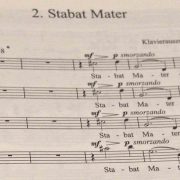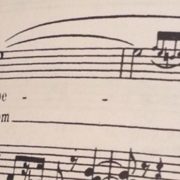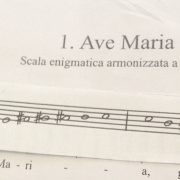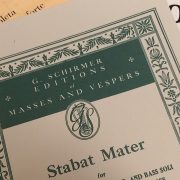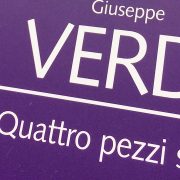Many of you would certainly be aware that our concert in July features two Stabat Maters – one of Verdi from his Quattro pezzi sacri, and one of Rossini. Here’s a sneak peek of how our two Italian opera masters accentuate the grief of Mother Mary in their respective settings of the Catholic hymn, on the first 1-2 pages of the vocal score:-
In Rossini’s setting, a dark mood is created by the orchestra’s plaintive opening, and the initial concealment of the tonic key is suggestive of a troubled heart. Thereafter, as the strings, chorus and vocal soloists take turns coming in, the “Stabat Mater” theme, a G-minor upward scale to its fifth, emerges as a graphical representation of the anguished Mother Mary weeping next to the cross on which her Son was crucified.
Verdi opens his Stabat Mater with ominous bare open fifths in bassoons, French horns and strings, which are interrupted by the choir singing a striking augmented fourth that is traditionally associated with human suffering; The descending, chromatic scale used in “Cujus animam gementem” is also thought to represent the agonizing cries of Mother Mary.
Come hear us perform Verdi’s Quattro pezzi sacri and Rossini’s Stabat Mater, in our upcoming concert. Tickets now available at urbtix outlets or online at http://bit.ly/1SARXnH
Event page: https://www.facebook.com/events/364342063776645/

